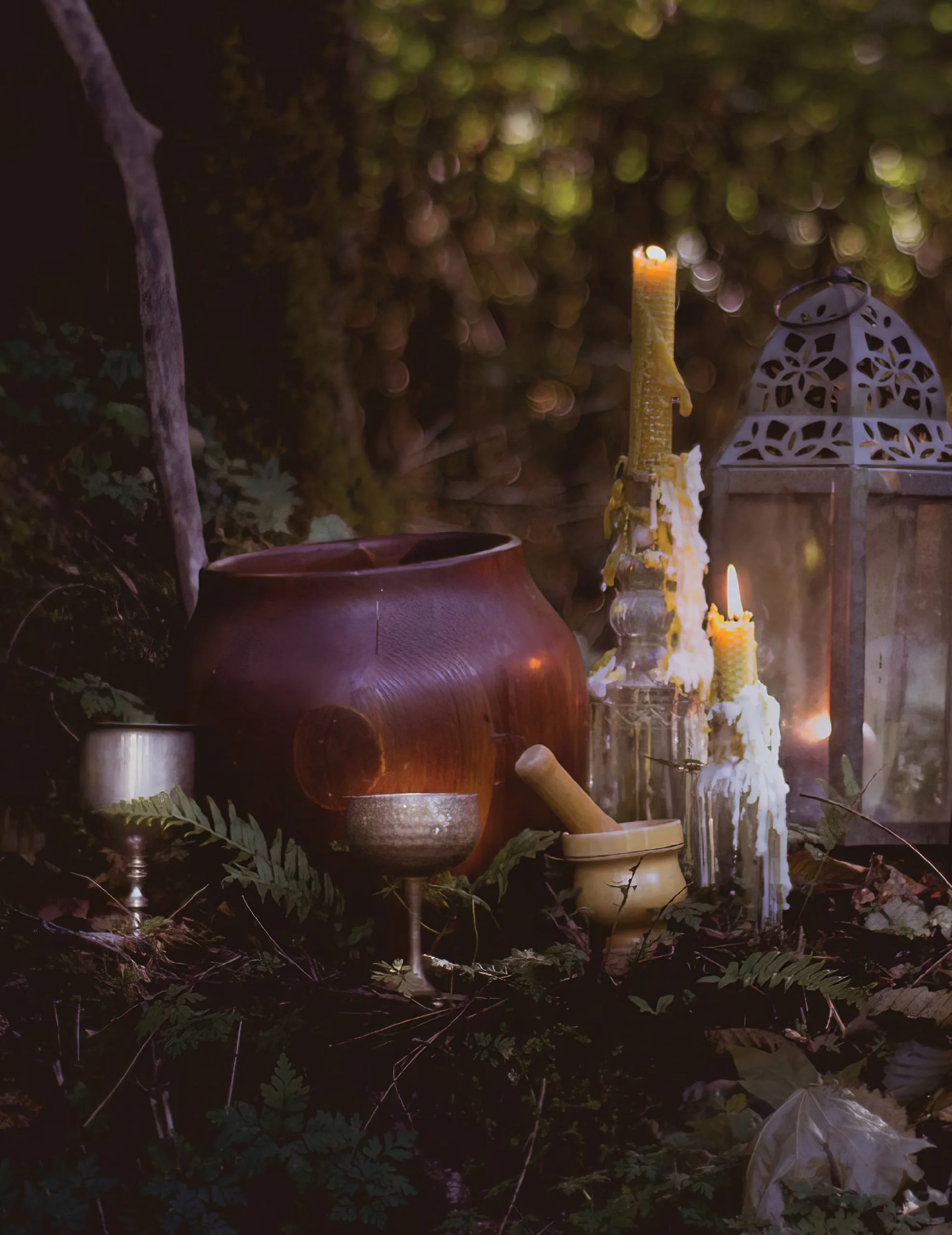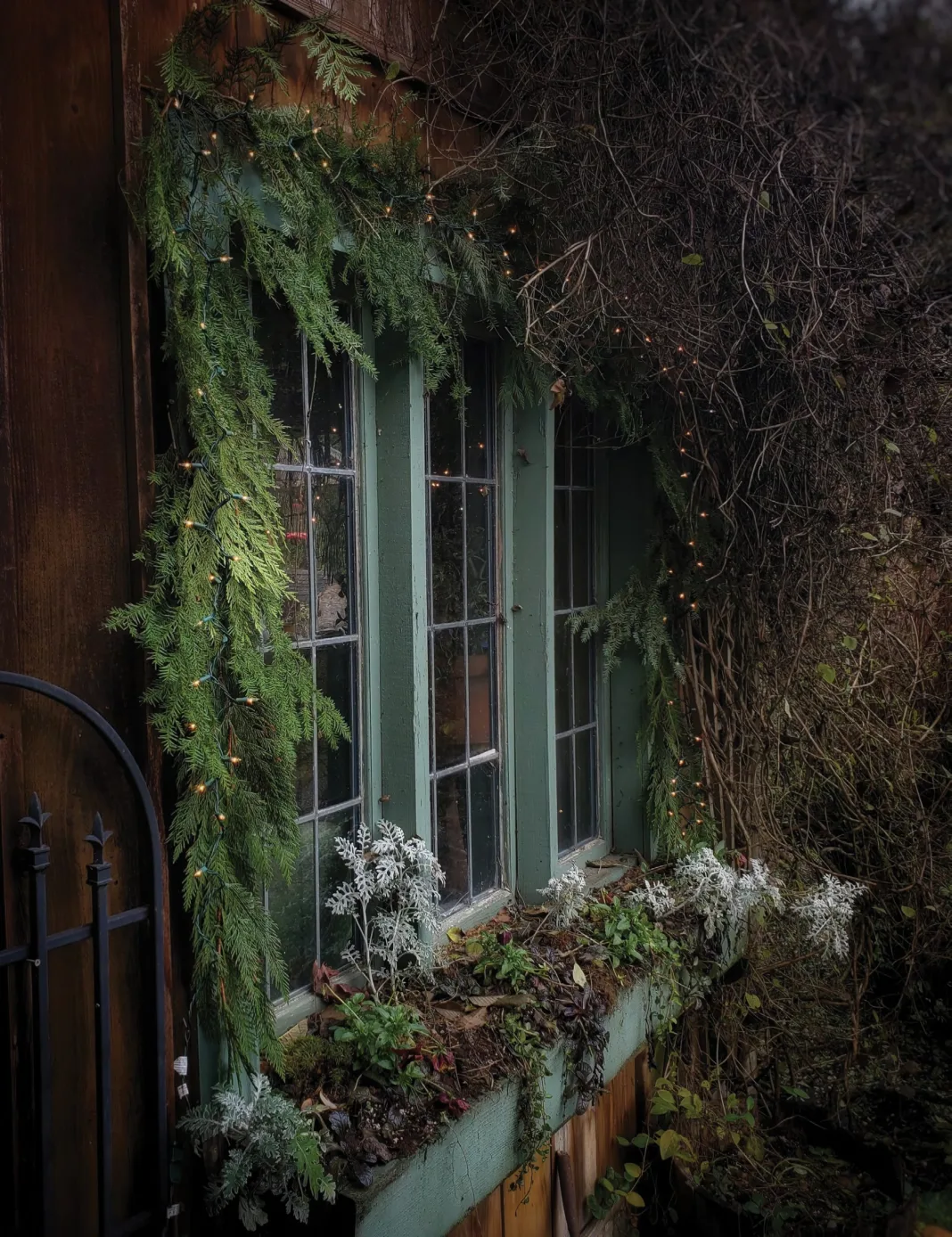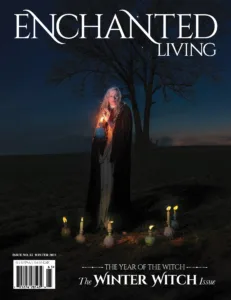I wrote A Year in the Enchanted Garden: Cultivating the Witch’s Soul With Spells, Crafts & Garden Know-How, my new book from Llewellyn, to inspire you to discover the true enchantment of a garden (big or small), to get your hands dirty and learn to work with the rhythms of nature in your own specific region, and to get to know the spirits of your land.
I invite you to tap into energy that is unique to your own magic with gardening tips, stories, recipes, charms and spells, herbal folklore, and seasonal celebrations for every month.
This is your invitation to stroll through the garden gate and down a stony path. Sit beneath the willow; she whispers eloquent tales of a witch (like you, like me) weaving magic with a green-tipped wand. Never mind the dirt stains under the witch’s fingernails; she finds solace in the company of growing things. Here is an excerpt:
Here We Go A-Wassailing
In northwestern Washington, winters can be particularly dreary. We have known people who have moved to our beautiful valley during the summer and by September declared, “The rain isn’t as bad as I thought it would be.” We chuckle at their naïveté and say, “Just wait until November.” Where I am, in eastern Skagit County, the mountains that surround us trap the clouds, so we can sometimes go months without a break in the weather. By the time spring arrives, we open our doors bleary-eyed and suspicious of the big, bright round thing that dominates an unfamiliar blue sky.

One particularly cold, soggy January afternoon, after weeks of continual drizzle, my five-year-old daughter said to me, “Mama, can’t we just shoo it away so the sun will come back?”
I smiled and then said, “I wish I had a spell to make it disappear.”
She went back to playing with her dolls and had soon forgotten all about the gray dampness that kept her indoors, but it got me thinking about rituals meant to scare away the winter and encourage the arrival of spring. I knew all about the carnival celebrations that would be happening in February; their pre-Christian roots began with festivals to usher in the spring. But the ritual I was most interested in was the mid-January ceremony known as wassail.
Long, long, ago, British people set out in small groups, sometimes led by a wassail king and queen, into the bitter cold of a January evening. This would typically take place on the eve of Twelfth Night, January 5 or January 17, depending on which calendar was used. As they walked down the winding paths that led to their orchards, they banged drums and rang bells to frighten away winter spirits. Along with them they brought a special brew of cider or beer that had been prepared with herbs, sugar, spices, eggs, and cream. Typically, they surrounded the oldest fruit-bearing tree, chanted rhymes, and sang songs to wake up the spirit of the tree. In some traditions, the trunk of the tree was beaten with a stick to get the sap moving. As an offering, pieces of dried bread would be dunked into the wassail bowl, and the elected queen would place them in the hollow or supporting branches of the tree. Some of the wassail brew would then be poured about the roots or upon the tree’s trunk, and the revelers shared the rest.

It was that very evening that my daughter, Chloe, who was rightly elected queen, and my sons, Joshua, age twelve, and Elijah, age nine, followed me down a winding path, equipped with apple cider and some bells, to our small orchard. As we walked, we shook our bells and cried out, “Go away, winter! Ye have been banished!”
The kids ran circles around the gnarly old apple tree that produced the smallest and knobbiest apples you can imagine. “Wake up, wake up!” they screeched and jingled their bells. Chloe, taking her role of elected queen very seriously, ceremoniously dunked toasted bread into our wassail bowl and tucked it into the crook of one of the lower branches. “Here you go, nature spirits,” she said. “I hope this helps you wake up and make all this rain go away.”
We sang what verses we could remember from that old carol “Here We Come A-Wassailing,” then spilled a little of the wassail onto the roots of the old tree before sharing the rest among ourselves. “Here’s to a good try, old friend,” I said and raised the bowl. Of course, after taking a big swig from our wassail bowl, Joshua had to spray the contents from his mouth all over the tree’s trunk.
“Joshie!” Chloe screamed and started hitting him with her bells.
“I was just blessing the tree,” he said, blocking her blows with a now sloshing bowl of apple cider. This statement threw my nine-year-old into a fit of laughter, to which Chloe responded with a set of bells between his eyes.
“It’s time to go in,” I said as calmly as I could. I watched as my three little witchlings ran screaming and laughing back to the house, and then I turned toward the tree. “I know you get it,” I said and patted the twisted trunk. “Blessed be, dear spirit.”

Planting Your Bare-Root Tree
Bare-root trees and shrubs are typically available to buy at your local nursery between January and March. What’s great about buying bare-root plants is that it is an easy and affordable way to add fruit-bearing or flowering trees and shrubs to a new garden. Also, most bare-root trees sold are typically a dwarf or semi-dwarf variety, so spacing isn’t as big of an issue as it would be were you to purchase a standard-size tree.
When to plant your bare-root tree will vary from region to region, but ideally you want to plant trees when they are still dormant. In warmer regions, that means late fall to early winter. In colder regions, just after the ground has thawed.
When you are ready to plant your bare root tree or shrub …
• Take off the protective packaging and gently untangle root system.
• Soak in water for approximately three to six hours.
• Dig a hole that is at least double the size of the root spread. Break up the sides of the hole to accommodate growth.
• Mix equal parts garden soil and good compost and partly fill in the hole.
• Place the tree in the hole and fill soil in around the roots. Make sure the root collar (where the roots meet the base of the tree) is level with the ground. Pack the soil in well.
• Build up the soil a little around the tree to form a water basin and give your tree a good watering.
• Cover a three-foot-wide and two-inch-deep area around the base of your tree with mulch to hold in moisture.
• Water every seven to ten days until the tree is well established.





























 Enchanted Living is a quarterly print magazine that celebrates all things enchanted.
Enchanted Living is a quarterly print magazine that celebrates all things enchanted. 




